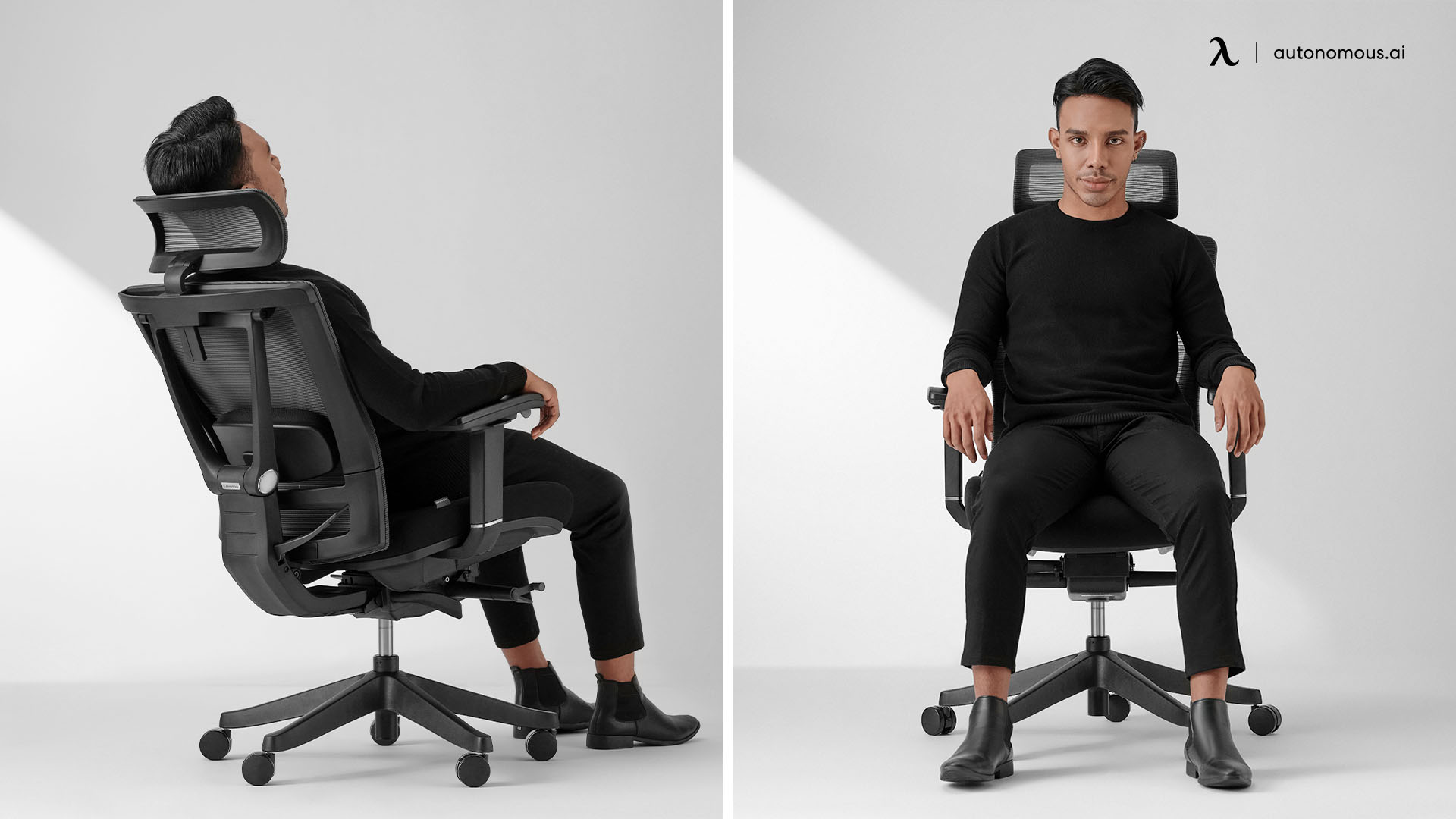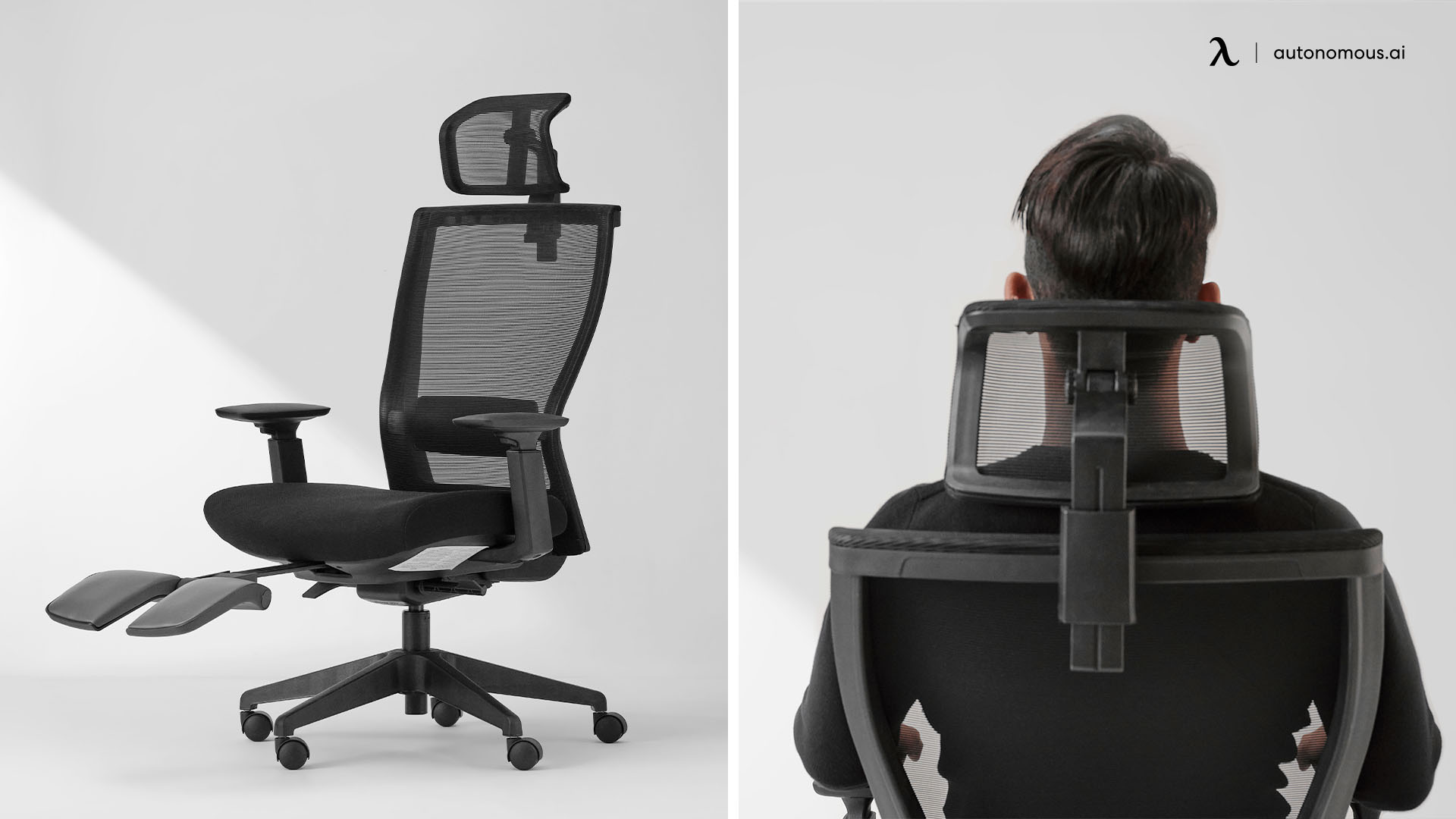Types of Chairs for Sciatica Relief: Best Type Of Chair For Sciatica
Sciatica, characterized by pain radiating down the leg from the lower back, significantly impacts comfort and mobility. Choosing the right chair can play a crucial role in managing this pain by providing proper support and promoting healthy posture. Understanding the ergonomic features of various chair types is essential for finding the best solution for individual needs.
Ergonomic Features for Sciatica Relief, Best type of chair for sciatica
Ergonomic chairs designed to alleviate sciatica prioritize support for the natural curvature of the spine. Key features include adjustable lumbar support, which provides a customized fit to the lower back, preventing slouching and reducing strain on the sciatic nerve. The seat depth should allow for proper thigh support without pressure on the back of the knees, promoting good blood circulation and reducing discomfort. Adjustability is paramount, allowing users to customize the chair’s height, backrest angle, and armrest position to accommodate their individual body dimensions and preferences. These adjustments help maintain a neutral spinal alignment, reducing pressure points and minimizing sciatica pain.
Comparison of Chair Types for Sciatica
The effectiveness of different chair types for sciatica varies depending on individual needs and preferences. A comparison reveals the strengths and weaknesses of each option.
| Chair Type | Lumbar Support | Seat Depth | Adjustability |
|---|---|---|---|
| Kneeling Chair | Generally poor, relies on user posture | Typically shallow, may not suit all body types | Limited adjustability, primarily height |
| Ergonomic Office Chair | Excellent, often adjustable and customizable | Variable, but typically allows for good thigh support | High degree of adjustability: height, backrest angle, armrests, lumbar support |
| Supportive Recliner | Good, particularly with adjustable headrest and lumbar support | Variable, but generally allows for deep seating and leg extension | High adjustability: recline angle, footrest, headrest, lumbar support |
Posture and Spinal Alignment
Maintaining proper posture is critical for sciatica management. Different chair types influence posture in distinct ways. Kneeling chairs encourage an upright posture by shifting the weight forward, reducing pressure on the lower back, but can be uncomfortable for extended periods. Ergonomic office chairs, with their adjustable features, allow for optimal postural alignment, supporting the natural curves of the spine and distributing weight evenly. Supportive recliners, when used correctly, can provide excellent spinal support, especially for individuals who require more relaxation and relief from pressure. However, prolonged slouching in any chair type can exacerbate sciatica symptoms.
Chair Construction Materials and Their Impact
The materials used in chair construction significantly influence comfort and support. Mesh backrests promote breathability and airflow, preventing overheating and discomfort, particularly beneficial during prolonged sitting. High-density foam provides excellent cushioning and conforms to the body’s shape, offering superior support for the lower back and reducing pressure points. Wooden frames offer durability and stability, while providing a sturdy base for the chair’s ergonomic features. The combination of these materials can create a chair that effectively supports the spine, promotes healthy posture, and minimizes sciatica pain. For example, a chair with a mesh backrest, high-density foam seat cushion, and a sturdy wooden frame offers a blend of breathability, support, and durability.
Factors to Consider When Choosing a Chair

Selecting the right chair for sciatica relief requires careful consideration of several key factors. The perfect chair will provide optimal support, adjustability, and comfort, ultimately minimizing pain and promoting proper posture. Ignoring these factors can lead to continued discomfort and potentially worsen existing conditions.
Best type of chair for sciatica – Choosing a chair involves a multifaceted decision-making process. It’s not simply about aesthetics; it’s about finding the perfect blend of comfort, support, and adjustability tailored to your individual needs and body type. This requires understanding the crucial features to look for and how they impact your overall well-being.
Key Features for Sciatica Chair Selection
Several features significantly impact a chair’s effectiveness in alleviating sciatica pain. Prioritizing these aspects ensures the chair provides the necessary support and comfort for long-term use. A poorly designed chair, regardless of price, can exacerbate existing pain.
- Lumbar Support: A strong, adjustable lumbar support is crucial. This feature provides the necessary curvature to support the lower back, reducing strain and pressure on the sciatic nerve. Look for chairs with adjustable lumbar support that can be customized to your individual back curve.
- Seat Height and Depth: The seat height should allow your feet to rest flat on the floor with your knees bent at a 90-degree angle. The seat depth should be sufficient to support your thighs without cutting off circulation. An excessively deep seat can cause pressure on the back of the knees.
- Armrests: Adjustable armrests allow for proper posture and reduce strain on the shoulders and neck. They should be positioned at a height that allows your elbows to rest comfortably at a 90-degree angle while seated.
- Seat Cushioning: High-density, supportive cushioning is essential. The cushioning should conform to your body shape, distributing weight evenly and preventing pressure points that could aggravate sciatica.
- Adjustability: The ability to adjust the chair’s height, backrest angle, and lumbar support is paramount. This allows for personalized comfort and support, catering to individual needs and preferences.
- Material Quality: Durable, breathable materials are preferable. Look for high-quality fabrics and construction that can withstand daily use and maintain their shape and support over time.
Body Weight, Height, and Chair Dimensions
Body weight and height significantly influence the ideal chair dimensions for sciatica relief. A chair that’s too small or too large can negatively impact posture and exacerbate pain. Proper sizing ensures optimal support and minimizes strain on the lower back.
For example, a taller individual might require a chair with a higher seat height and a deeper seat pan to accommodate their longer legs and torso. Similarly, a heavier individual might benefit from a chair with a wider and more robust base for enhanced stability and support. Manufacturers often provide detailed specifications, including weight capacity and dimensions, to guide consumers in selecting appropriately sized chairs.
Price Ranges and Correlation with Features and Materials
Chair prices vary significantly, reflecting differences in features, materials, and construction quality. Generally, higher-priced chairs offer more advanced features, such as superior adjustability, higher-quality materials, and enhanced ergonomic design. However, this doesn’t always mean the most expensive chair is the best choice; careful consideration of individual needs is key.
Budget-friendly chairs may offer basic lumbar support and adjustability, while mid-range chairs often incorporate more sophisticated features like adjustable armrests and enhanced cushioning. High-end chairs typically feature advanced ergonomic designs, premium materials, and a wider range of adjustability options, potentially including features like headrests and integrated heating/massage functions. Understanding the relationship between price and features allows consumers to make informed decisions based on their budget and specific requirements.
Chair Selection Checklist
Using a checklist can streamline the chair selection process and ensure all essential factors are considered. This structured approach helps consumers make informed decisions, focusing on features that directly impact sciatica pain relief. Remember, the goal is to find a chair that promotes proper posture and minimizes pressure on the sciatic nerve.
| Feature | Requirement | Notes |
|---|---|---|
| Lumbar Support | Adjustable and firm | Should conform to the natural curve of your lower back |
| Seat Height | Allows feet to be flat on the floor with knees at 90 degrees | Consider using a footrest if needed |
| Seat Depth | Supports thighs without pressure on the back of knees | Avoid seats that are too deep or too shallow |
| Armrests | Adjustable and padded | Should support forearms comfortably |
| Overall Adjustability | Height, backrest angle, lumbar support | Allows for personalized comfort and support |
| Material Quality | Durable and breathable | Consider materials like mesh or high-density foam |
Maintaining a Healthy Back While Sitting

Maintaining a healthy back while seated is crucial, especially for individuals experiencing sciatica. Prolonged sitting can exacerbate existing pain and contribute to new problems if proper posture and techniques aren’t followed. Understanding and implementing these strategies can significantly improve comfort and reduce the likelihood of sciatica flare-ups. This section will explore practical tips and exercises to alleviate strain and promote spinal health.
Proper sitting techniques are fundamental to minimizing strain on the lower back and alleviating sciatica symptoms. The goal is to maintain the natural curves of the spine, distributing weight evenly and avoiding pressure on the sciatic nerve. Incorrect posture can compress the nerve, leading to pain, numbness, and tingling that radiates down the leg. Conversely, correct posture can help reduce these symptoms and prevent future problems.
Correct Sitting Posture
Imagine a plumb line dropping from the top of your head. This line should ideally pass through the center of your ear, shoulder, hip, and knee. Your back should be straight, but not stiff, maintaining the natural S-curve of your spine. Your shoulders should be relaxed and slightly drawn back, avoiding hunching. Your hips should be slightly higher than your knees, and your feet should be flat on the floor or supported by a footrest. Your thighs should be parallel to the floor, and your knees should be bent at a 90-degree angle. This balanced alignment minimizes stress on your spine and sciatic nerve, allowing for proper blood circulation and nerve function. Picture your spine as a stack of perfectly balanced building blocks, each vertebra supporting the one above it without excessive pressure.
Practical Tips for Healthy Sitting
Maintaining good posture requires conscious effort and regular practice. Here are some practical tips to incorporate into your daily routine:
Regularly adjust your posture throughout the day. Set reminders to check your posture every 30 minutes.
Use a lumbar support pillow or cushion to maintain the natural curve of your lower back. This will help prevent slouching and reduce strain on your spine.
Take short, frequent breaks from sitting. Stand up, stretch, and walk around every hour. Even a few minutes of movement can make a big difference.
Avoid sitting in the same position for extended periods. Vary your posture and try different chairs or seating positions throughout the day.
Engage your core muscles. Actively engaging your abdominal muscles helps to support your spine and improve posture.
Exercises to Improve Posture and Reduce Sciatica Pain
Regular exercise plays a vital role in maintaining a healthy back and managing sciatica. These exercises help strengthen the muscles that support your spine, improving posture and reducing strain on the sciatic nerve. Remember to consult your doctor or physical therapist before starting any new exercise program.
Pelvic Tilts: Lie on your back with knees bent and feet flat on the floor. Gently tilt your pelvis backward, flattening your lower back against the floor. Hold for a few seconds, then relax. Repeat several times. This exercise strengthens your abdominal muscles and improves lower back support.
Knee-to-Chest Stretch: Lie on your back with knees bent. Gently pull one knee towards your chest, holding for 15-30 seconds. Repeat with the other leg. This stretch helps to relieve tension in your lower back and hips.
Cat-Cow Stretch: Start on your hands and knees. Inhale, arching your back like a cat, and exhale, dropping your belly towards the floor like a cow. Repeat several times. This dynamic stretch improves spinal mobility and flexibility.
